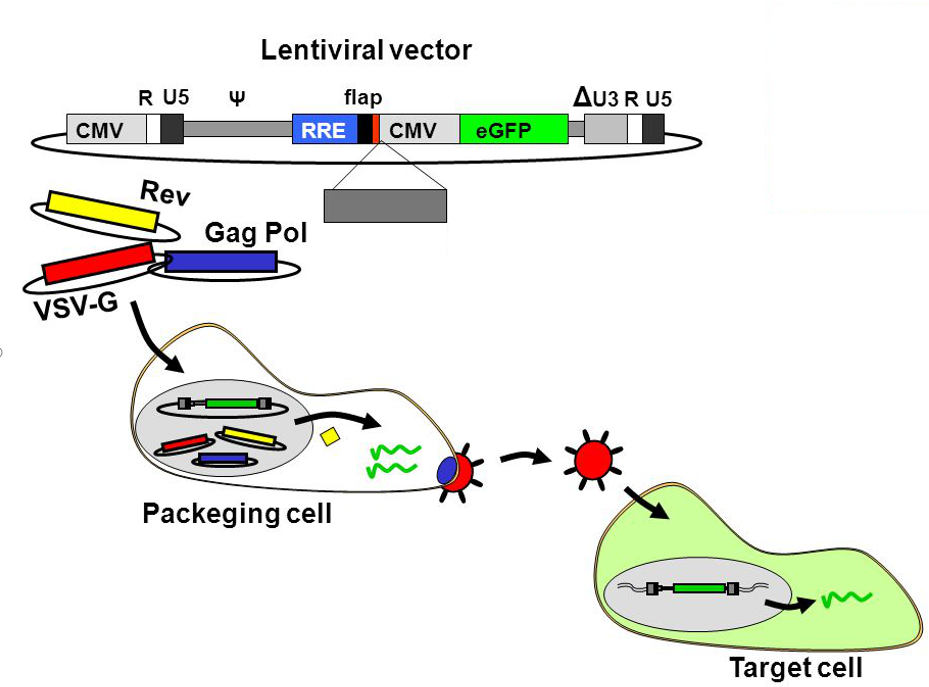Lentiviral vectors can transduce a wide range of cell types and integrate into the host genome in both dividing and post-mitotic cells, resulting in long-term expression of the transgene both in vitro and in vivo.
Transient transfection method is now widely used for generation of recombinant lentivirus. The third-generation lentiviral vector system consists transfer vector, pMDL (Gag/Pol), pREV and pVSVG.
The experimental process of recombinant lentivirus production is as follows.
Day 1: Cell seeding
The day previous to transfection, prepare 15-cm platess by seeding each platess with HEK-293. Be sure cells should be at 70%~80% confluence the next day.
Day 2: Transfection with plasmid mix
● Prepare the plasmid mix by aliquoting the four plasmids into a 50ml tube. For a 15 cm dish preparation, use 20 µg of transfer vector, 15 µg of pMDL (Gag/Pol), 8 µg of pVSVG (vesicular stomatitis virus glycoprotein) and 6 µg of pREV. Add 147ul PEI to the plasmid mix. Mix gently by inverting several times and incubate 15 min at room temperature.
● Add the transfection mixture (spreading in drops) to plate. Swirl the plates gently and incubate at 5% CO2, 37 °C overnight.
Day 3: Observe the cells and change the media
If a visible marker (such as GFP) is present in the lentivector plasmid, transfection efficiency may be assessed visually. Ideally, transfection efficiency should be >80%. Remove media, add 15 ml of fresh DMEM + 2% FBS to each dish and transfer to 10% CO2, 37 °C. Incubate overnight.
Day 4: Collect first harvest of supernatant
Collect and pool supernatant and suspensions, which contains infectious lentiviral particles. Add 15ml of fresh DMEM + 2% FBS to dish. Incubate dishes at 10% CO
2, 37 °C overnight.
Day 5: Collect second harvest of supernatant
Pool supernatant from first and second harvests. Repeat viral harvesting every 12-24 h, typically collect a total of 2-3 time points. Viral titer tends to decrease in later harvests. After the final harvest, discard the packaging cells.
BrainVTA could offer the high-quality
Lentivirus products and satisfactory
customized LV services to researches. Click the
Send Request button directly and we will finish the further steps for you. Meanwhile, we have prepared some coupons special for submitting clients.
